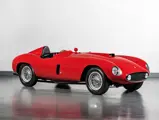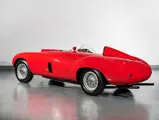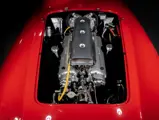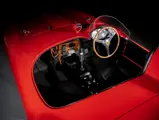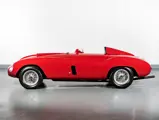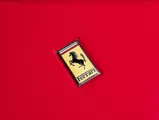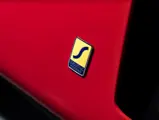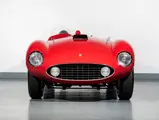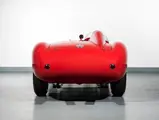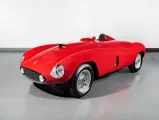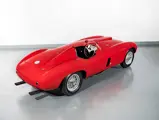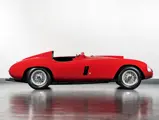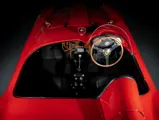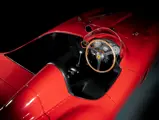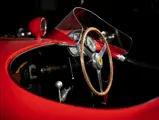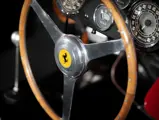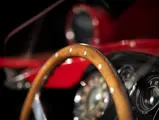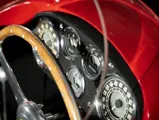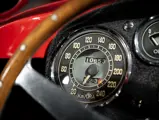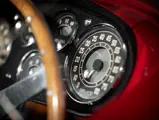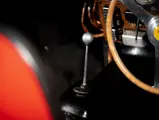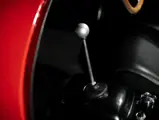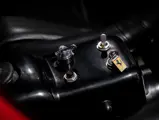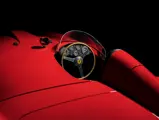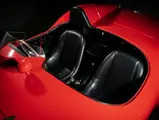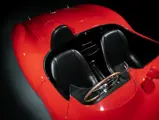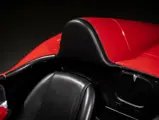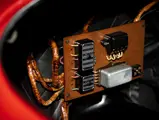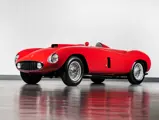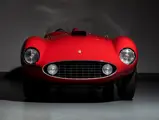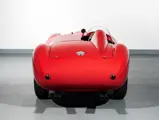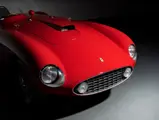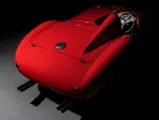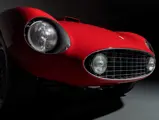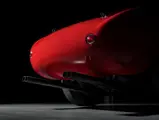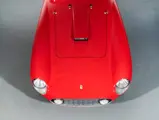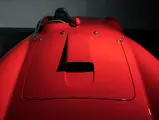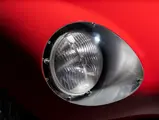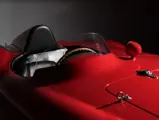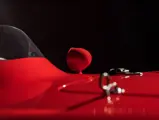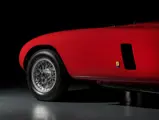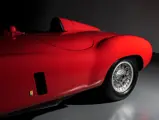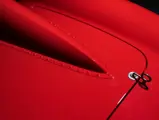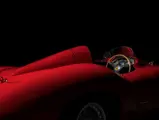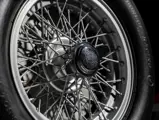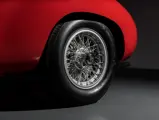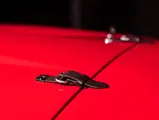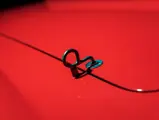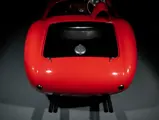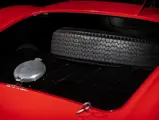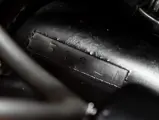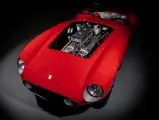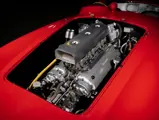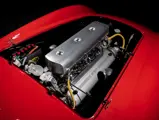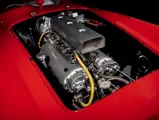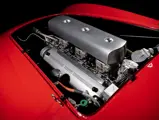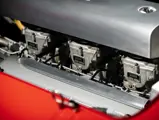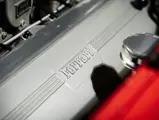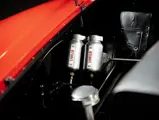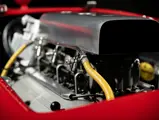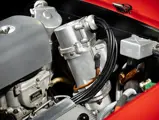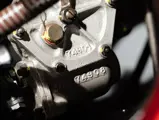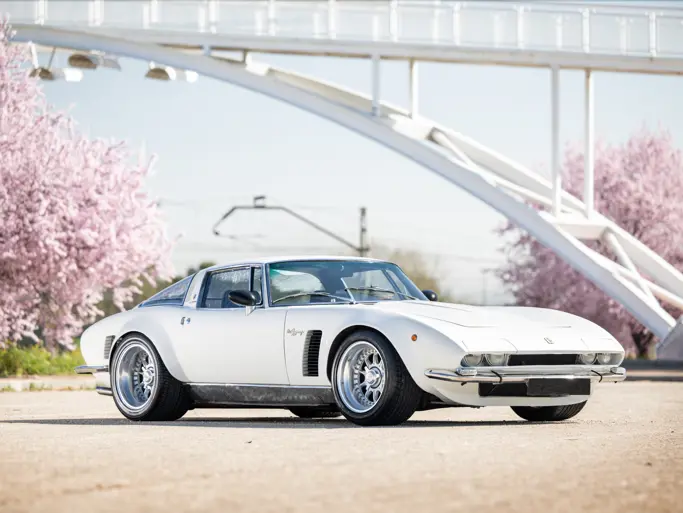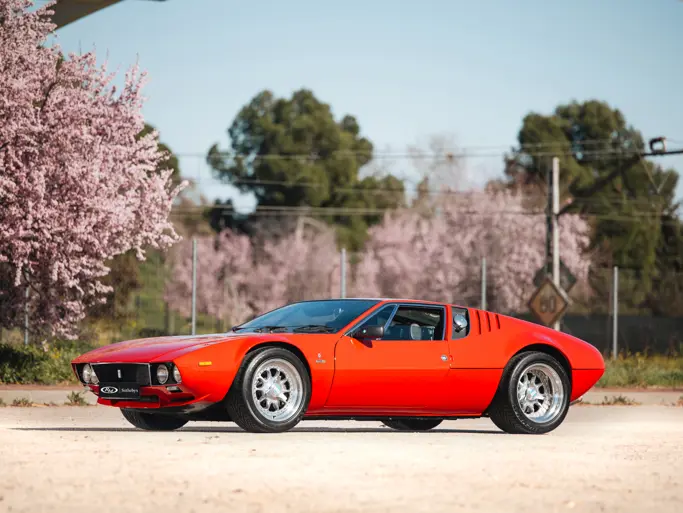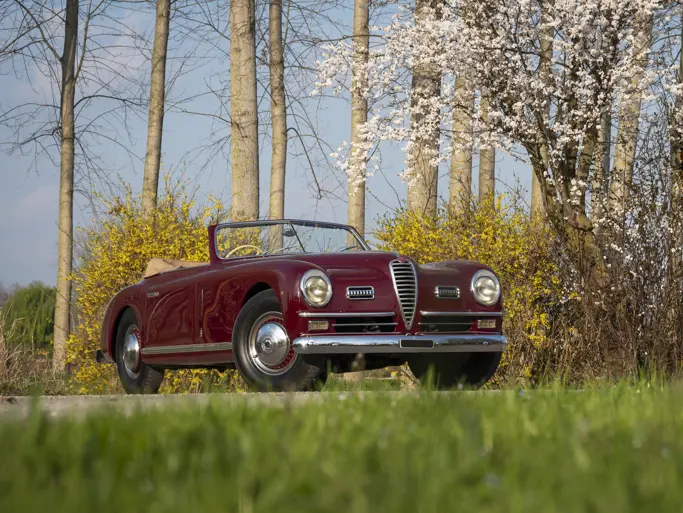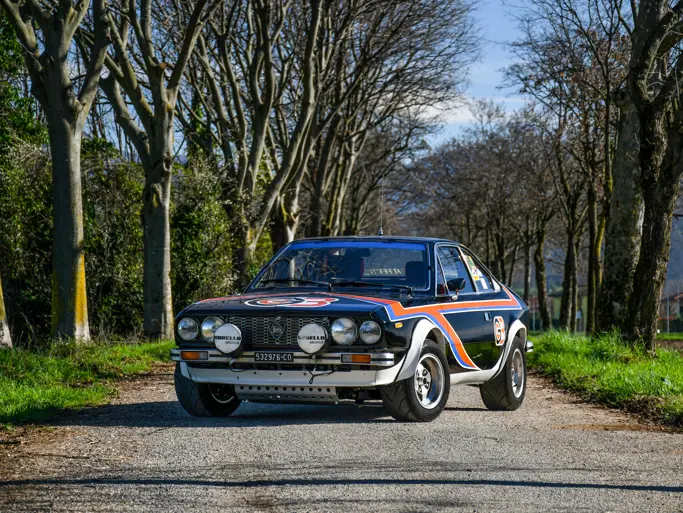Monterey 2022
1953 Ferrari 375 MM Spider by Scaglietti
Offered from the Oscar Davis Collection
{{lr.item.text}}
$7,485,000 USD | Sold
 | Monterey, California
| Monterey, California
{{internetCurrentBid}}
{{internetTimeLeft}}

- The fourth of 12 examples originally completed as Pinin Farina Spiders, and the ninth of 26 examples built overall
- Notable period racing history across Casablanca, Portugal, Sweden, and Finland
- Rebodied by Scaglietti in 1954 with stylistically evolutionary coachwork
- Retains matching-numbers engine; restored to its 1954 configuration under previous ownership
- Documented with factory build sheet copies, 1970s invoices, former owner’s correspondence, and history by marque authority Marcel Massini
ON THE ROAD TO LE MANS
Tracing the evolution of Ferrari’s Lampredi long-block racing V-12 engine through the early 1950s reveals a connect-the-dots of important competition victories, leading from smaller World Sportscar Championship events like the 1000 KM of Buenos Aires to the Mille Miglia all the way up to the important win at the 1954 24 Hours of Le Mans. As displacement volumes regularly increased, complemented by ever-larger Weber carburetors and increasingly powerful ignition systems, the cars faced consistently fierce competition while cutting out an indelible place in racing history.
This pattern continued at Le Mans in 1953 with the first appearance of a 4.5-liter Pinin Farina-bodied berlinetta, chassis number 0318 AM, which was noticeably longer than the preceding 340 MM cars thanks to a wheelbase extended by four inches. This first 375 MM was powered by an engine developed specifically for the 1952 Indianapolis 500, and it set a lap record while being driven by Alberto Ascari and Luigi Villoresi before clutch trouble forced an early retirement. Recognizing the new car’s promise, Maranello upgraded three 340 MM berlinettas and one 340 MM Vignale Spyder to 375 engine specifications to complete a factory team of four cars. Over the course of the 1953 season these cars achieved victories at the 24 Hours of Spa-Francorchamps, Senigallia, the 12 Hours of Pescara, the Nürburgring 1000 KM, and the 12 Hours of Casablanca.
Later in 1953, Ferrari began building a series of 375 MM examples for privateer clients, and these cars were equipped with a larger engine that displaced 4,522 cubic centimeters. The engines continued to feature the original factory specifications of twin magnetos and triple Weber 40 IF4/C carburetors, as well as an identical chassis layout. Twenty-six examples of the 375 MM were built in total (all but three of them bodied by Pinin Farina) before the model was supplanted in 1954 by the 375 Plus, which would famously go on to win the 24 Hours of Le Mans in 1954.
Clothed in beautiful coachwork, and owners of some of the most successful racing records of their era, these cars occupy an important middle position between the 340 America and 340 MM examples, and the 375 Plus examples that followed. With a power that can be felt as well as heard, these extraordinarily specified sports-racers hold a special place in 1950s Ferrari racing lore. They now retain a consummate perch in important Ferrari collections worldwide, possessing a competition pedigree that is further bolstered by their undeniable rarity.
A SIGNIFICANT EARLY PRIVATEER 375 MM
Claiming an early life of rigorous racing use by privateers, and a groundbreaking in-period re-body by Sergio Scaglietti, this restored 375 is a fascinating example of Maranello’s rare sports-racer. Completed in late 1953, chassis number 0366 AM is believed to be the ninth of 26 examples built, and the fourth of 12 cars completed with spider coachwork by Pinin Farina. According to the research of marque expert Marcel Massini, this 375 was delivered to the 12 Hours of Casablanca in Morocco in late December 1953 for use by its first owner, Casimiro De Oliveira. A resident of Porto, Portugal, Oliveira had shown promise as a racing privateer in prewar Europe when he beat Tazio Nuvolari and Rudolf Hasse at a 1937 race held at the Circuito Internacional de Vila Real. This reportedly prompted Ettore Bugatti to invite Oliveira to participate in the 1938 Rio De Janeiro Grand Prix, where he charged up the field to finish 5th after starting in last place.
Oliveira was scheduled to team up with reigning two-time Formula One champion Alberto Ascari for the Casablanca race, and the 375 showed great potential when Ascari outperformed the other qualifiers, putting the car on the pole position to start the race. Unfortunately, the Ferrari was not able to realize its full potential under Ascari as it was ruled out before the race started when Oliveira suffered a crash in practice. Following the race the nose was subsequently repaired at the Maranello factory during early 1954.
In May 1954 Oliveira bounced back with his first victory when he was first to the checkered flag at the 9 Hours Hedemora Grand Prix in Sweden, but this was followed up by a disappointing early retirement at the Portuguese Grand Prix two months later. In the fall of 1954, Oliveira sold the Ferrari to Swedish importer Tore Bjurström, who planned to have Valdemar Stener drive the car. Before this could happen, however, Oliveira apparently crashed the 375 during a race at Skarpnäck airfield in September 1954, damaging the bodywork beyond repair.
As a result, chassis 0366 AM was sent to Ferrari for repairs and to Scaglietti for new coachwork, resulting in the sole 375 MM bodied by the famed carrozzeria—and a highly significant preview of the shape of competition Ferraris to come. Visually wider and lower than the original Pinin Farina spider coachwork, the new body style featured long bulbous front fenders, a smaller protruding grille, and a driver’s head fairing, presaging soon-to-emerge themes in Scaglietti design that would manifest in the forthcoming 410 Sport and Testa Rossa designs. Stener returned 0366 AM to further competition use, finishing 2nd overall at the Helsinki Grand Prix in May 1956 and 5th overall and 2nd in class at the Swedish Grand Prix only a few months later. At the conclusion of the 1956 season the car was retired from racing and only occasionally taken out for a few show exhibitions.
By the mid-1960s the Ferrari was owned by Gunnar Fristedt, and he commissioned a coachwork modification that changed the front end into a dual-nostril shark nose design reminiscent of the racing Dino 268 SP design. Exhibited by Fristedt at the 1969 sports car show in Malmö, Sweden, the 375 was sold to Ake Andersson of Stockholm in 1970. The car then passed to two more Swedish owners during the early 1970s before being restored in the United Kingdom by David Clarke’s Graypaul Motors.
In 1992 the Ferrari was acquired by Lord Charles Brocket for a brief time and shown at the 1992 Coy’s Historic Race Festival at Silverstone before being sold to the well-known American collector Chuck Wegner of Chicago in early 1993. Later that year Wegner drove the 375 on the Mille Miglia Storica, and he presented the car at the FCA National Meet at Palm Beach, Florida, and the 2nd Annual Monterey Vintage Ferrari Concours at the Quail Lodge.
In July 1996, the Ferrari was sold to Italian enthusiast Giuseppe Calgaro, and he entered the car in the Trofeo Alberto Ascari historic race at Monza in September 1997 before selling it four months later. Acquired then by Scott Rosen, the spider was presented at the 1998 Pebble Beach Concours d’Elegance in the class for Scaglietti Coachwork.
STUNNING SCAGLIETTI TAILORING, RESTORED
In early 1999, the Ferrari was sold to Oscar Davis in what would be his first period of ownership of 0366 AM. Presented at the 2000 Cavallino Classic, the 375 won a Silver Award, and the car was featured in the May 2001 issue of Forza magazine.
In March 2002, Davis sold the Ferrari to Graham Revell of Hidden Hills, California. Revell went on to enter the 375 in the 2003 and 2004 Mille Miglia Storica, though mechanical issues prevented him from actually running the vintage tour in the first year. Around this time the car underwent significant preparation for touring use by the well-known Fossil Motorsports of Richard Freshman. Among the exhibition highlights of this period were the 2008 Reading Concours d’Elegance, where the car won the Francesco Barraca Award for a Ferrari of exceptional merits; the spider was also exhibited at the 2009 Cavallino Classic.
Obviously experiencing a case of seller’s remorse, Davis was able to reacquire 0366 AM circa 2017. Shortly prior to this, the 375 had been submitted to Frank Triarsi’s Classic Coach Repair in Elizabeth, New Jersey, for a complete restoration. At that time the nose was returned to the original 1954 configuration of the Scaglietti design, correcting the cosmetic alterations made to the car in prior decades. The car has since enjoyed fastidious care within his collection, being tended as needed by Leydon Restorations and adding display at the 2020 Amelia Island Concours d’Elegance to its lengthy list of world-class show appearances.
Sensational to behold, this awesomely powerful and well-presented example of the important 375 MM is documented with copies of original factory build sheets, invoices from the 1970s, former owner’s correspondence, and the history by Massini. Ideal for future display at marque events or major concours d’elegance, this Ferrari is also eligible for the most exclusive vintage racing and touring events worldwide, including the Le Mans Classic, the Mille Miglia Storica, the California Mille, the Colorado Grand, and the Copperstate 1000.
As one of only 26 total examples built, and featuring an innovative 1954 rebody by Scaglietti—who would go on to become Maranello’s preferred carrozzerria for racing models and production berlinettas—chassis number 0366 AM would make a superlative addition to any collection, particularly suited for Ferrari enthusiasts searching for a unique example of an important Lampredi-engine racing model.

